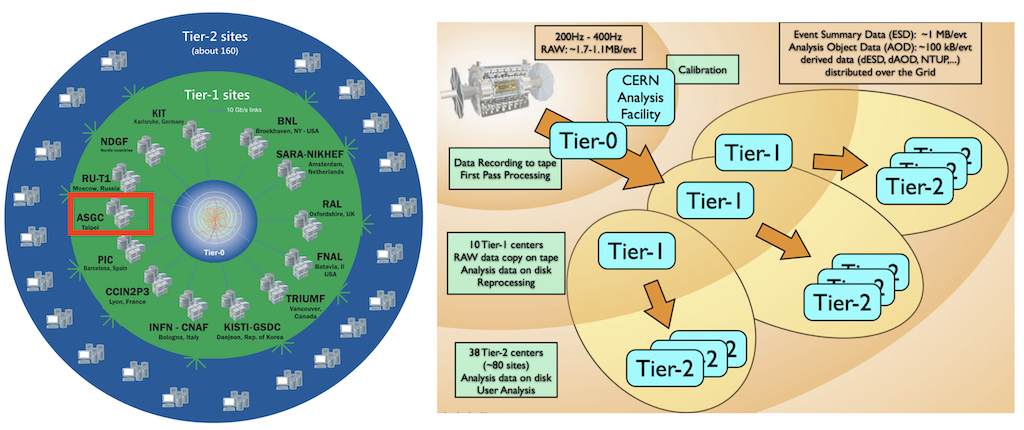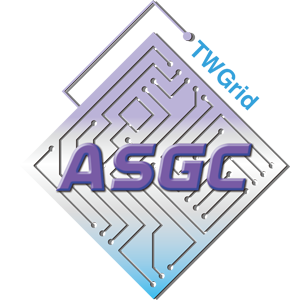WLCG and LHC Experiments: Search for the Origin of Matter
The Worldwide LHC Computing Grid (WLCG) is a global collaboration of more than 170 computing centres in 42 countries, linking up national and international grid infrastructures.The mission of the WLCG is to provide global computing resources to store, distribute and analyse the O(100) Petabytes of data expected every year of operations from the Large Hadron Collider (LHC) at CERN. In the discovery of Higgs, WLCG plays a crucial role.
In December 2005, Academia Sinica signed MoU with CERN for ASGC (Academia Sinica Grid-Computing Center) to become one of the ten Tier-1 centers of WLCG (the World-Wide LHC Computing Grid) and the only one in Asia. According to the founding mission, ASGC has been joining the development and deploying the first successful large-scale worldwide distributed computing system through international collaboration – the WLCG since LCG0. WLCG supports the discovery of Higgs Particle in 2012 together with the LHC experiments and the accelerator. The discovery confirmed the theory of how particles acquire mass whose inventors were awarded by the Nobel prize for physics in 2013. According to the Director General of CERN in 2012, Rolf Heuer, when the discovery of the Higgs, “It’s been a global effort, a global success. It has only been possible because of the extraordinary achievements of the experiments, infrastructure, and the grid computing.”
ASGC has been supporting reliable big data processing in particle physics for over 1M CPU-days in annual average and more than 300PB data transmission from 2010 to 2018. ASGC also jointly enhanced reliability and efficiency of the internet-wide large-scale distributed cloud infrastructure in collaboration with CERN.

